Delivering an added-value experience can help companies pull ahead of the pack, giving customers the incentive to return—while also elevating the business and the entire industry.
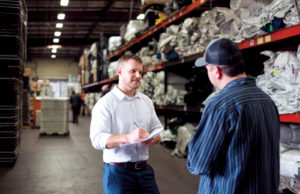
It can be challenging to stand out from the scrum of companies clamoring for attention and business. More challenging still is inspiring the kind of loyalty that keeps customers cemented to your side, despite the lure of lower-priced or more glamorous competitors. Providing high-quality products is a given, but what can really spell the difference are the things companies do to add value to their offerings: providing exceptional customer-focused service and support, one-of-a-kind touches and experiences, or perks and freebies that are perceived as desirable and, well, value-added.
In some cases, adding value can require a lot from companies. They may have to revamp products to make them more meaningful or accessible to customers, or improve company technology and/or processes, even create new departments or teams tasked with the value-added objective. But often, adding value can be achieved through small touches that let customers know their business—and they themselves—are vitally important to the company. There are many ways to forge long-term relationships through value-added strategies.
Empowering and promoting
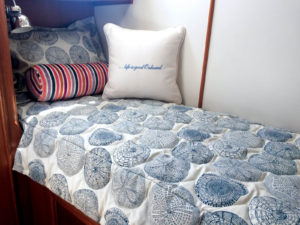
Located in Cottage Grove, Ore., Pacific Yurts Inc. “is the original manufacturer of the modern yurt,” says Alan Bair, president. Not sure what a yurt is? Basically, it’s a round structure (Pacific Yurts’ are constructed with high-quality, sturdy wood framing and durable architectural fabric coverings) that can be used for a multitude of residential and commercial purposes, ranging from simple backyard studios or offices or backcountry ski huts to lavish, low-impact vacation retreats or glamping shelters. The company’s yurts come loaded with a variety of standard features; customers can also choose to add an array of options.
One value-added benefit Bair mentions is the Yurt Builder 3D™, a three-dimensional configurator available on the company’s website that launched several years ago.
“We found our sales and customer service staffs were spending a lot of time on the phone explaining the features and upgrades we offer and that most people were doing much of their research online,” he explains. “We thought empowering prospective customers to configure a yurt on their own and learn about the features available for that yurt would free up our time as well.”
Getting the Yurt Builder 3D up and running took extensive work on the part
of several staff members and the company’s digital partners, with the website redesign requiring the better part of a year. But now, potential customers can get an itemized price quote and a 3-D visualization of their custom yurt, either printing the quote out for themselves or submitting it for follow-up from a sales representative.
“The response has been overwhelmingly positive,” says Bair. “This has empowered people to learn about our product at their own pace. It also frees up our sales time to focus on qualified leads and to spend less time educating people about the product.”
Another value-add the company offers is the Yurt Vacations page, which offers an extensive listing of its commercial clients with links—searchable by country or state—to each of their websites.
“For many years a problem for us was that people were interested in our products but had never actually set foot inside one of our yurts,” Bair says. “This page allows people to find Pacific Yurts near them to visit.”
Since many of these commercial yurts (think resorts or Airbnbs) are used for overnight accommodations, prospective customers have the option of booking a stay, getting the opportunity to experience the yurt before committing to a purchase.
“We provide the listings and links at no cost not only to provide a way for potential customers to see the product but to also help boost our commercial clients’ business income,” Bair says. “If our commercial clients stay busy enough, they are also more likely to need additional yurts, so this ends up being good for everyone.”
Old-school value
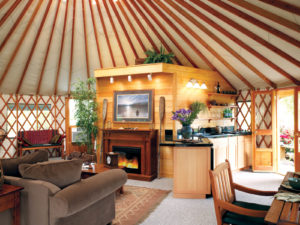
Sometimes adding value requires some old-school elbow grease, as Krisha Plauché, principal designer for Onboard Interiors LLC, can attest. Located in Marblehead, Mass., Onboard designs and fabricates custom interiors—including cushions, drapery, flooring and accessories—for private and commercial sail and power boats. The company offers a complete selection of fabrics and items specifically suited for the marine environment.
“We’re available to answer any questions a customer might have for cleaning stains, etc.,” says Plauché. “Most fabrics we use have excellent cleaning codes, but sometimes [we get called] over something unique.”
For example, when several yachts were damaged as a result of a propane tank explosion in a boatyard, Plauché and her crew helped repair and clean the upholstery onboard the affected vessels (“The Ultrasuede® cleaned like a dream,” she recalls).
Adding value can be achieved in low-tech ways. For example, upon a project’s completion, Onboard custom-designs a pillow in a fabric that complements the interior, giving it as a gift to the customer. Initially, the company offered a pillow monogrammed with each vessel’s name, but about 10 years ago Onboard began monogramming its tagline—“Life is good Onboard”—on these gift pillows instead. The company also started offering fabric care instructions around that time as well.
“This was after customers were requesting information about the fabrics. So we send a care instruction sheet with all the care and cleaning codes for the fabrics they’ve selected,” she says. “We researched a long list of products and fabrics to include on our care list, and then we custom-pick from the list to complete for each customer.
“We do everything we can to keep the customer happy,” Plauché says. “That’s our boss for the duration of the project, which could be a few weeks or months. Marine work isn’t easy, but with many years of training, education, research and yes, mistakes—which of course you fix—it is great fun.”
Affordability, training, support
Consew® manufactures and distributes cutting and sewing machines and spare parts. Meistergram® manufactures and distributes embroidery machines and supplies. Consew customers are those involved in cutting and sewing applications and sewn products, with markets including apparel, marine, military, medical, sports and others. Meistergram targets the decorative-stitch industry and commercial manufacturers, counting Tempur-Pedic, Ashley Furniture and LL Bean among its customers, says Doug Glenn, vice president of both companies, which are headquartered
in Carlstadt, N.J.
One way Consew has added value is by developing machines, targeted for its mid-level customers, that incorporate features previously found on much more expensive models. These include the 7360R-7DD and the 7360RH-DD (Direct Drive) launched at the start of this year.
“We’ve made affordable machines for those clients who would otherwise be priced out of high-end machines to now be able to offer their customers high-end results at affordable prices,” says Glenn. “These machines also automate what was once done by hand, resulting in increased productivity, especially for shops and factories with entry-level sewers.”
Through its new Gem Series and Gem-XL Series, Meistergram is also making embroidery and monogramming more affordable for companies, while offering attractive advancements such as a larger sewing field and overlapping sewing fields, as well as automating a variety of functions.
In addition to machine advancements, the company provides strong education and support, says Glenn, for example, holding training sessions throughout the year at various trade shows and events. “We also have a video library with over 300 videos,” he says. “This can be found online at our website, or through YouTube or on the IFAI video library.”
When a company purchases one of its embroidery/monogramming machines, Meistergram sends a technician to deliver training and education, including how to create the designs, troubleshooting, maintenance and more. Depending on the size and scope of the machine, training can take up to five days and is built into the cost of the machine. The company also offers unlimited and free troubleshooting phone support and provides a network of soft-products suppliers.
Although Consew sells through independent sewing machine dealers (Meistergram sells through dealers and also direct), the company does get involved in helping manufacturers determine which kind of machine would best meet their objectives. Armed with this information, they can then purchase through a local dealer.
“They can also purchase online, but we encourage them to buy from a dealer; we have a network of 2,500 dealers in North America, and we like to support our dealers,” says Glenn.
Tangible intangibles
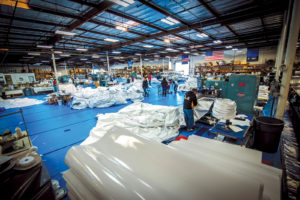
For Aztec Tents, inventive and high-quality products are vitally important, but the real value-add comes with all that is included with the product’s purchase, says Alex Kouzmanoff, vice president of the Torrance, Calif., producer of tents and structures for the special events industry.
“In other words, it is all the goodies we provide to make our products stand out from their competitive counterparts,” says Kouzmanoff. “In our own organization these benefits include many of the intangible aspects that all businesses would regard as service and support.”
People comprise the company’s primary asset, he says, explaining that the company encourages a very hands-on workforce. Teams spend a great deal of time in the field with customers—Aztec provides products to event rental companies, hotels, country clubs, caterers, award shows, governments and others—working side by side to gain a comprehensive understanding of customer concerns
and then actively innovating solutions.
“Often, this business-to-business support comes in the form of helping our customers get better organized, simplifying their employee training processes, or streamlining systems based on known best-practices initiatives,” Kouzmanoff says. “These ideas and concepts can turn into physical forms we share with our customers, such as marketing and training videos, load lists, or engineering and product documentation.”
Another way Aztec adds value is by promoting and marketing niche products directly to its customers’ customers, what Kouzmanoff calls a “leapfrog” marketing approach. This started with the company’s Tidewater® Sailcloth Tent System.
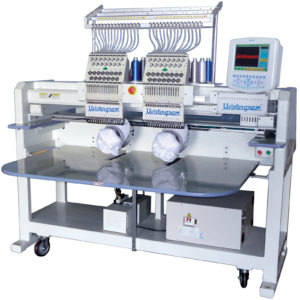
“We created our own Tidewater product microsite and used traditional and digital advertising mediums to drive consumers to the contact page of this website where they can engage directly with our customers,” he says. “The success of this product with end consumers, and its eventual growth as a new market segment within the special events community, has been directly attributed to the marketing efforts we made and continue to make to drive consumers to our customers.”
The company also tries to make ordering equipment as simple as possible by focusing on the entire process from start to finish. Aztec has also made significant moves to do the same when it comes to obtaining replacement parts via its e-commerce website, which enables customers to order replacement components 24/7 with near-immediate shipment.
“It all comes down to culture,” says Kouzmanoff. “Can your business fully embrace your customer and act on their behalf to create those products and value-added attributes that make you stand out from your competition?”
Pamela Mills-Senn is a freelance writer based in Long Beach, Calif.
As sustainability concerns continue to drive decision-making across markets, more companies are striving to incorporate eco-friendly products, not only in an effort to enhance their appeal to customers and broaden their reach but also to help their end users do the same—a value-added strategy American & Efird LLC (A&E) has fully embraced.
Located in Mount Holly, N.C., A&E is a manufacturer of premium-quality industrial and consumer sewing and embroidery thread and technical textiles for the apparel, automotive components, home furnishings, medical supplies, footwear and other markets. Its thread offerings include REPEL, an advanced, PFC-free water-repellency enhancement customers can order as an additional feature applied to the company’s global sewing threads brands—among them the Perma Core®, D-Core®, Wildcat Plus®, Perma Spun® and Excell® product lines—and the new Anefil Poly® using REPREVE® recycled sewing thread (the REPREVE fiber is derived from recycled plastic drinking bottles). The continuous-filament, polyester sewing thread is available in a wide array of colors.
A&E is also focused on socially and environmentally responsible manufacturing processes, which is reflected in the company’s sustainability program, the results of which are presented in A&E’s 2017-2018 Ethical Thread Corporate Sustainability Report. The report is organized around a variety of global sustainability categories, such as water stewardship, solid waste, carbon footprint, energy conservation, social responsibility, and employee health and safety. Some highlights:
• A&E has recycled and reused more than 1.5 billion liters of wastewater since 2013—enough to supply 75 million people with water for one day at 20 liters per person.
• The company has achieved a 48 percent reduction in global water consumption (liters per kg of thread) since 2016.
• In 2017, the zero-waste-to-landfill status grew to 16 global manufacturing operations and support facilities; five other operations were above the 91 percentile mark. A&E’s goal is to achieve this sustainability status in all of its manufacturing operations worldwide.
“Sustainability is very important to A&E,” says Jacob Blackburn, global marketing. “We strive to take an active leadership role and work to be a good example within the industries and the communities in which we operate.”
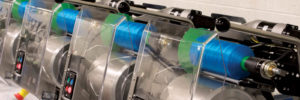
 TEXTILES.ORG
TEXTILES.ORG


